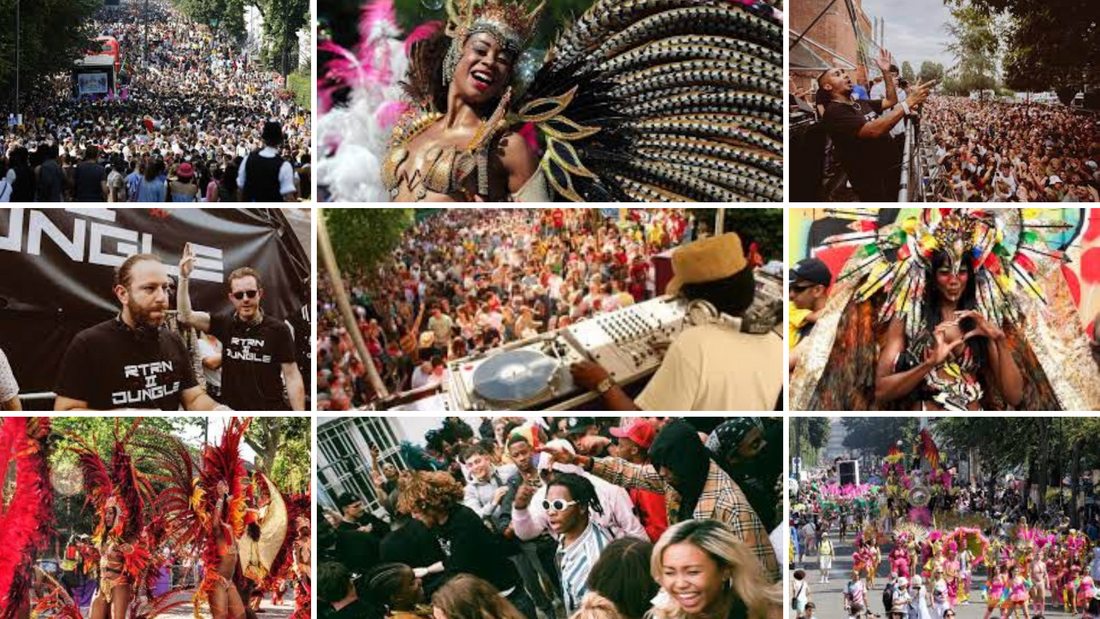
Celebrating Unity & Diversity: Notting Hill Carnival
Share
London's Notting Hill Carnival stands as a vibrant testament to the city's rich cultural tapestry and history. An annual celebration of Caribbean heritage, music, dance, and community spirit, the carnival has evolved over the years to become one of the largest street festivals in the world. This colourful and exuberant event has deep roots that reflect both the challenges faced by the Caribbean community in London and the resilience that has driven their cultural expression.
Origins and Early Years:
The roots of the Notting Hill Carnival trace back to the 1950s when Caribbean immigrants arrived in the United Kingdom seeking new opportunities and a better life. Facing discrimination, exclusion, and economic hardships, these immigrants established tight-knit communities in areas such as Notting Hill, West London. During the 1950s and 1960s, tensions escalated, leading to racially motivated violence in the form of the Notting Hill Riots of 1958.
Amidst these challenges, Trinidadian community activist Claudia Jones organised the first Caribbean Carnival in 1959 as a response to the unrest. Held indoors, this precursor to the Notting Hill Carnival aimed to create a sense of belonging, celebrate Caribbean culture, and counter the negative stereotypes faced by the community. Despite its success, financial constraints forced the cancellation of subsequent events.
The Birth of the Notting Hill Carnival:
In 1966, local social worker Rhaune Laslett organised the first Notting Hill Carnival as we know it today. Born out of a desire to foster harmony and heal the wounds left by the riots, this carnival was a community-led effort that brought together Caribbean and local residents. The event combined the Caribbean tradition of lively street celebrations with the local English fair concept.
The early carnivals were characterised by spontaneous parades, steel bands, vibrant costumes, and calypso music, all of which added to the festive atmosphere. The Notting Hill Carnival rapidly grew in popularity, evolving into a two-day celebration over the August Bank Holiday weekend. Throughout the 1970s and 1980s, the carnival faced various challenges, including financial constraints and attempts by local authorities to stop it. However, the community's determination and resilience prevailed, and the carnival continued to thrive.
A Celebration of Diversity:
As the decades passed, the Notting Hill Carnival became a symbol of London's multicultural identity. The carnival welcomed people from all walks of life, uniting them through the shared appreciation of music, dance, and culture. Alongside traditional Caribbean elements, the event embraced influences from other cultures, showcasing the dynamic nature of London's diversity.
Influence and Global Impact:
London's Notting Hill Carnival has inspired similar events worldwide, celebrating the Caribbean diaspora and promoting unity. Cities like Toronto, New York, and Miami have adopted the carnival concept, adapting it to their own unique cultural landscapes. The Notting Hill Carnival has become a beacon of multiculturalism, demonstrating the power of community-driven initiatives to bridge gaps and overcome challenges.
London's Notting Hill Carnival stands as a testament to the enduring power of culture, community, and unity. From its humble beginnings as a response to adversity, the carnival has grown into a world-renowned event that showcases the vibrancy of Caribbean culture and the importance of celebrating diversity. As it continues to evolve, the Notting Hill Carnival reminds us that despite challenges, the human spirit can triumph and create something truly extraordinary.
